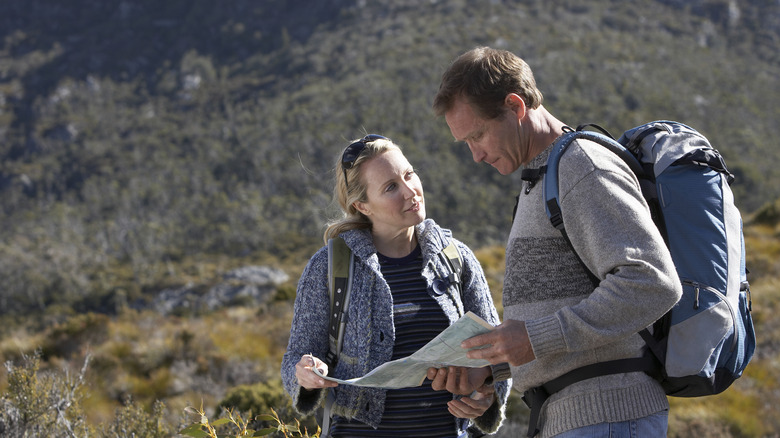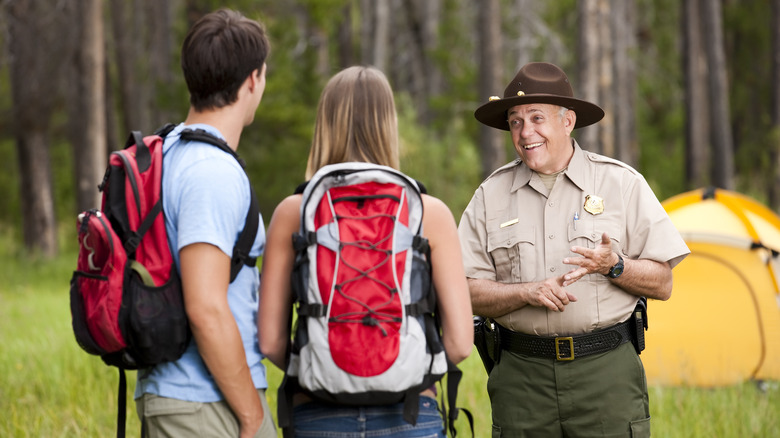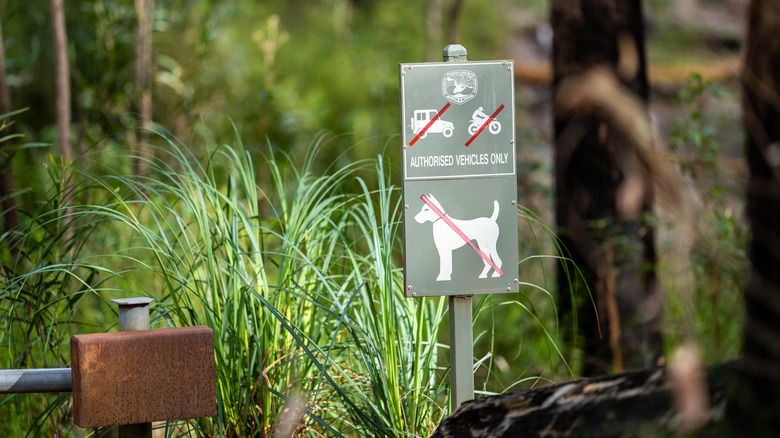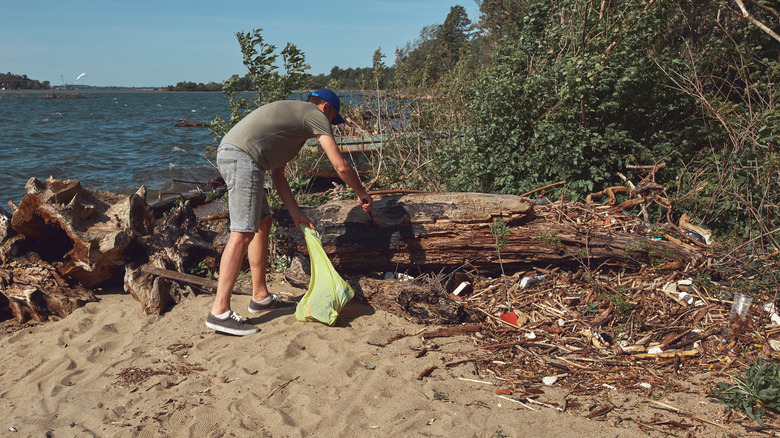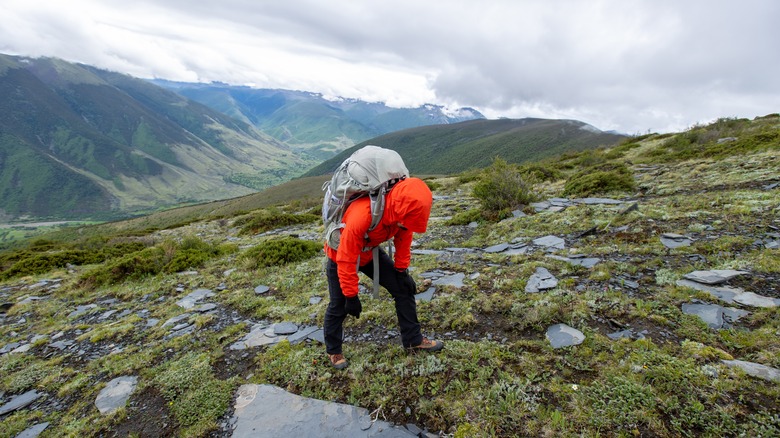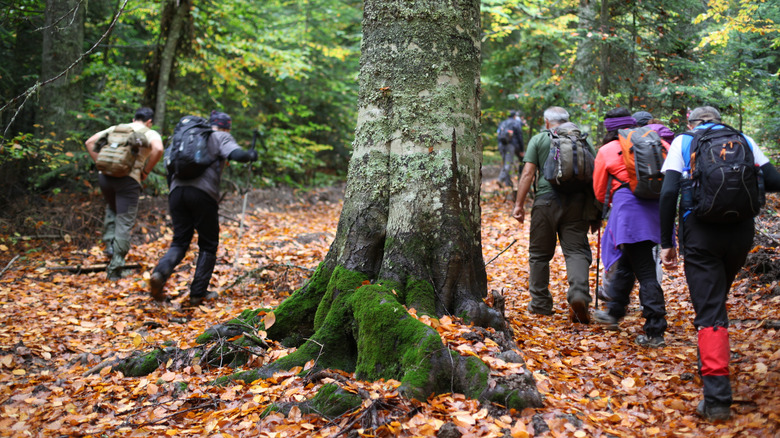The Biggest Mistakes People Make When Visiting National Parks
Exploring the wonders of national parks can be a breathtaking and rewarding experience, offering a chance to connect with nature and witness some of the planet's most stunning landscapes. National parks promise a rendezvous with the sublime, a chance to immerse oneself in the untamed beauty of nature.
As travelers gear up for this exploration, the excitement often eclipses meticulous planning, leading to oversights that can diminish the experience for both visitors and the delicate ecosystems they encounter. It's easy to overlook some crucial details that can significantly impact the overall enjoyment and preservation of these pristine environments. To help you avoid these quandaries, we're delving into the biggest mistakes people often make when visiting national parks.
From environmental faux pas to safety oversights, understanding these pitfalls will not only enhance your adventure but contribute to the long-term conservation of these natural treasures. So, lace up your hiking boots and join us as we navigate the do's and don'ts of immersing yourself in the splendor of national parks.
A lack of research
National parks are huge — some consisting of millions of acres of land. Journeying into a national park without ample research is akin to navigating uncharted waters without a map. Far too often, visitors forgo the crucial step of finding out about the park's nuances and little details, leading to missed opportunities and unfulfilled experiences. The absence of comprehensive research can result in overlooking key attractions, scenic trails, and engaging activities that define the essence of the park.
The consequence is not merely a loss of time but a missed connection with the park's unique offerings. Picture standing at the entrance of a vast wilderness, unaware of hidden gems tucked away in its folds. The lack of research diminishes the richness of your encounter with the natural world, leaving you potentially wandering aimlessly, oblivious to the wonders that await.
To remedy this, meticulous planning becomes our compass. Utilize the plethora of resources available — official park websites, detailed maps, and comprehensive guides. These tools serve as invaluable companions, offering insights into the topography, ecosystems, and notable points of interest. A well-researched itinerary ensures you not only witness the iconic attractions but also discover the lesser-known treasures that can elevate your experience from ordinary to extraordinary.
Skipping ranger programs
Whilst researching for your next trip to one of American's beautiful parks, be sure to also access the park's ranger-led programs. Within the heart of every national park, a wealth of knowledge resides in the form of park rangers — dedicated stewards who possess a deep understanding of the environment. However, the mistake of bypassing ranger-led programs is more common than one might think. These programs, often overlooked, are not just optional add-ons but gateways to a deeper, more informed connection with the park.
By choosing to forgo ranger programs, one misses out on a golden opportunity for an educational immersion. The park's ecological tapestry remains a mystery, and the chance to appreciate the subtleties of its flora, fauna, and geological wonders slips through the fingers.
Instead, actively participate in ranger-led programs. These sessions, led by experts passionate about the park's conservation and history, provide invaluable insights. Attendees are not only regaled with captivating narratives but also gain a profound understanding of the delicate ecosystems they are exploring. Ranger programs transform a simple visit into a meaningful journey, fostering a connection that extends beyond the visual splendors of the park. So, when the opportunity arises, seize it — your understanding and appreciation of the national park will be richer for it.
Overpacking
Imagine navigating the pristine trails of a national park, surrounded by nature's symphony, only to find your enjoyment impeded by the burdensome weight of an overstuffed backpack. This common mistake, overpacking, turns the pursuit of joy into an exercise in discomfort. Laden with unnecessary items, your once-promising adventure becomes an arduous trek.
The consequences of overpacking extend beyond the physical strain. Unwieldy backpacks can compromise your agility and freedom of movement, detracting from the immersive experience the park promises. Each unnecessary item becomes a burden, both in weight and in distraction, obscuring the unfiltered connection with nature you sought to attain.
To avoid potential injuries and premature fatigue, be discerning when packing, especially for longer visits. Pack with purpose. Prioritize essentials that cater to the specific demands of your journey. Consider the weather conditions and the activities you have planned. A nimble, well-curated backpack enhances your mobility, allowing you to traverse the park's diverse terrain with ease. Embrace the minimalist philosophy — travel light, unburdened by unnecessary items — and let the simplicity of your journey amplify the richness of your experience.
Ignoring park regulations
Picture this: A vast expanse of protected wilderness, a haven for biodiversity, and a delicate ecosystem that thrives in the absence of human interference. Now, imagine the subtle disruption caused by the oversight of ignoring park regulations — a seemingly innocuous mistake with far-reaching consequences.
The repercussions extend beyond individual actions. Failure to adhere to park rules can disrupt the delicate balance of ecosystems, whether it be damaging plants, or frightening animals native to the park. What may appear as a harmless action can have cascading effects, upsetting the natural order and diminishing the very essence that makes the park a sanctuary for diverse flora and fauna.
To safeguard these natural havens, the solution lies in a simple yet profound commitment: familiarize yourself with park regulations and adhere to them diligently. Park rules are not arbitrary restrictions; they are curated to preserve and protect the land. Educate yourself on these guidelines, often accessible through park websites, information centers, or pamphlets. Understand the significance of each rule, from designated trails to waste disposal, and let them serve as a compass for responsible exploration. By embracing and embodying these regulations, you contribute to the harmony of the park ecosystem. It's a collective responsibility to ensure that future generations can revel in the untouched beauty of these natural sanctuaries.
Disrespecting wildlife
Park regulations serve to protect both the human visitors and native animals in a park. Wildlife exists as a symbol of untamed beauty. However, sometimes, despite following all the rules, we may find ourselves in precarious encounters with animals. The mistake of disrespecting wildlife — often unintentional yet with profound consequences — can echo far beyond the initial encounter.
Approaching or feeding wildlife may seem like an innocuous act, but, unless explicitly permitted, it disrupts the intricate choreography of their natural behaviors. The consequences extend beyond the individual creature; it ripples through the ecosystem, potentially affecting migration patterns, feeding habits, and overall biodiversity. On top of interacting with animals, haphazardly stepping or plucking plants could disturb animals' eating behaviors or soil health in an area. Be sure to extend your respect for animals to the vegetation around you.
To truly appreciate and coexist with the wild inhabitants of these sanctuaries, a code of respect becomes paramount. Observe wildlife from a distance, utilizing binoculars or long-range lenses to bridge the gap without intruding. The beauty lies in their natural behaviors, and disturbing these moments disrupts the delicate balance that defines the park's ecology. Respecting their space is not just a courtesy; it's a conservation imperative. By keeping a safe distance, you minimize stress on the animals and contribute to the preservation of their natural behaviors. As visitors to their home, let our presence be one of silent admiration, ensuring that our fascination with wildlife harmonizes with the ethos of responsible exploration.
Underestimating nature
Underestimating the capricious nature of weather, often perceived as a benign backdrop, can swiftly transform an idyllic scene into a challenging and potentially perilous adventure. Nature's temperament is unpredictable, and weather conditions can shift with startling speed. The repercussions of underestimating these fluctuations are not just discomfort — they extend to the realm of safety. A clear sky can morph into a tempest, and gentle breezes can escalate into formidable gusts, catching the unprepared off guard.
To navigate this dynamic landscape effectively, preparedness becomes your shield. Be equipped to face the changes of weather by carrying essentials tailored to the conditions you may encounter. A lightweight, weather-resistant jacket, adequate hydration, and proper footwear are armor against the unexpected.
Additionally, staying informed is your compass. Keep abreast of weather forecasts before embarking on your journey, and, if possible, check for updates during your exploration. Nature, in its raw beauty, demands respect, and your preparedness is not just a precaution — it's a gesture of reverence towards the natural forces that shape these landscapes. So, as you venture into the embrace of nature, carry not just your curiosity but also the foresight to anticipate its mercurial moods.
Leaving a trace
In the embrace of nature's serenity, the mistake of leaving a trace — however small — can reverberate through the lands we venture to admire. Failing to abide by the principles of Leave No Trace undermines the pristine beauty that defines national parks. Littering and improper disposal of waste introduce foreign elements into these delicate environments. Beyond the visual pollution, these actions harm wildlife, disrupt soil composition, and compromise the overall health of the ecosystem. What might seem like a minor oversight accumulates into a lasting imprint on the landscape.
Instead, be committed to conscientiously practicing the Leave No Trace principles. The first principle is simple but profound: pack out what you pack in. Be meticulous about waste disposal, carrying all refuse with you. This not only preserves the visual integrity of the landscape but also safeguards the flora and fauna that call these parks home. Additionally, leave natural features undisturbed. Rocks, plants, and other components contribute to the intricate balance of the ecosystem. By refraining from altering or removing these elements, you contribute to the preservation of the park's natural state.
In essence, the call is for responsible stewardship — a commitment to ensuring that our presence enhances rather than diminishes the sanctity of these natural wonders. Let our legacy be one of minimal impact, allowing future generations to revel in the unspoiled beauty that defines our national parks.
Overlooking safety measures
In the pursuit of exploration, overlooking safety measures is a common oversight that can cast shadows on the brilliance of a park visit. Ignoring safety guidelines not only jeopardizes your personal well-being but also has the potential to turn a promising adventure into an unforeseen ordeal.
Accidents, ranging from slips and falls to more severe incidents, can occur when safety guidelines or park regulations are disregarded. The consequences extend beyond the individual, impacting park resources and often necessitating rescue operations that strain both human and natural resources. If engaging in extreme activities, whether rock-climbing, kayaking, mountain-biking — or anything else that gets your adrenaline pumping — be sure to do so only where allowed and within permitted parameters.
The solution lies in a commitment to follow safety instructions with diligence. Stay on marked trails designed to guide you safely through the park's terrain. Respect barriers and signage, understanding that they are in place for your protection and the preservation of the environment. Exercise caution, especially in unfamiliar areas, and be mindful of your surroundings. By embracing these safety measures, you not only safeguard your own well-being but contribute to the sustainability of the park for future generations.
Neglecting health considerations
While the allure of exploration beckons, neglecting health considerations can cast a shadow over your entire journey. Dehydration, altitude sickness, and exhaustion are common adversaries that, if ignored, can impact not only your immediate well-being but the overall quality of your park visit. Ignoring personal health considerations can lead to fatigue, diminished cognitive function, and even more severe conditions like dehydration or altitude sickness. What should be a rejuvenating encounter with nature transforms into a struggle against physical discomfort.
Always set out with a commitment to self-care. Stay hydrated by carrying an ample supply of water, especially in areas where natural water sources may be limited. If venturing to higher altitudes, acclimate gradually to allow your body to adjust. Listen to your body's signals, take breaks when needed, and recognize the importance of rest. Incorporate a mix of nourishing snacks to sustain your energy levels.
By prioritizing your health, you not only enhance your personal experience but ensure that your journey through the park is one characterized by vitality and appreciation. After all, the goal is not just to witness the beauty of the park but to immerse yourself in it, energized and attuned to the wonders around you.
Disregarding fellow visitors
In the communal embrace of a national park, the mistake of disregarding fellow visitors can preclude an otherwise beautiful shared experience. As we immerse ourselves in the wonders around us, fostering a positive and respectful atmosphere becomes essential for the collective enjoyment of these natural sanctuaries.
The consequences of disregarding fellow visitors extend beyond the individual encounter. Ignoring a passerby may mean you miss out on interesting information. In crowded areas, ignoring the presence and needs of others can lead to a tense and unharmonious atmosphere. Beyond that, not being aware of nearby people can be downright unsafe. These hindrances detract from the sense of shared wonder and appreciation that should define our collective exploration.
Be sure to practice courtesy and mindfulness. Recognize that the park is a shared space, and each visitor contributes to the overall experience. Be mindful of others' personal space and the volume of your activities, especially in quiet zones. Practice responsible sharing of common areas, respecting the space and serenity sought by fellow visitors. Engage in activities that foster a positive atmosphere, whether it's offering a friendly greeting, sharing information about interesting sightings, or simply being aware of the impact your presence has on those around you. By embracing these practices, you not only contribute to a harmonious atmosphere but also become an integral part of the collective effort to preserve the tranquil beauty of national parks for present and future generations.
Rushing through the experience
When nature's vast wonders compel you, the mistake of rushing through the experience is an impactful misstep. Attempting to see everything in a condensed timeframe may seem efficient, but it risks missing the essence of the park — those moments of profound connection with the natural world. Firstly, you risk overlooking the intricacies and subtle beauty that unfold when given the time for discovery. Secondly, the hurried pace detracts from the sense of tranquility and contemplation that these sanctuaries are designed to offer.
Instead, slow down and savor the moments. Resist the urge to check off a checklist of sights hastily. Take your time to immerse yourself in the surroundings. Allow the natural beauty to unfold at its own pace.
Embrace a mindset of exploration rather than conquest. Pause at scenic overlooks, listen to the rustle of leaves, and take in the fragrant air. Engage with the environment on a sensory level. By doing so, you transform your visit from a fleeting encounter to a meaningful journey, rich with the depth and appreciation that comes from allowing the park to reveal its wonders to you in its own time. In this way, the beauty of the national park becomes not just a visual spectacle but a tapestry of experiences woven through unhurried exploration.

